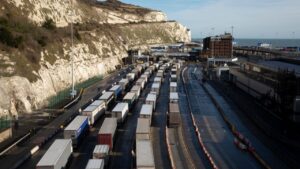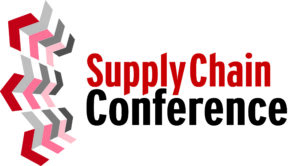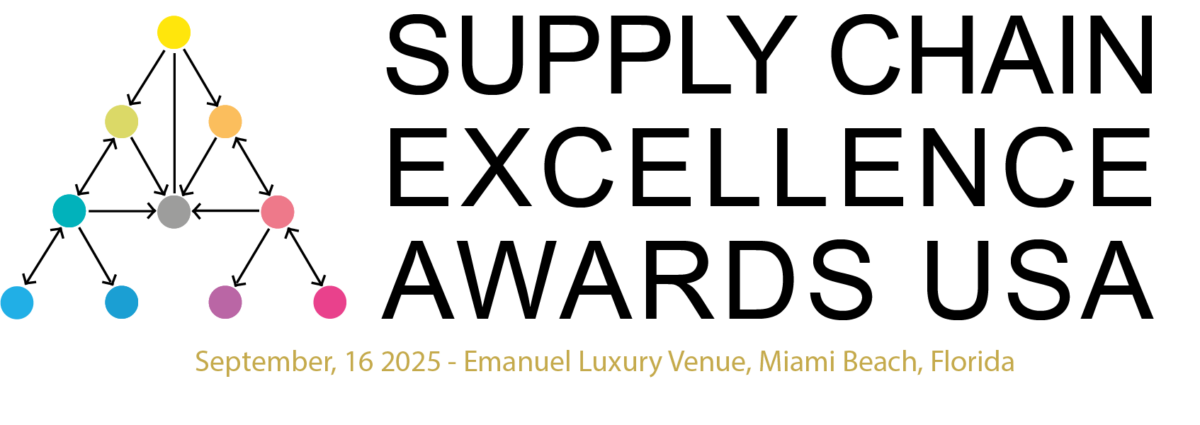Pόl Sweeney, Vice President Sales EMENA Fleet at Descartes, will be one of many speakers delivering a thought-provoking presentation at this year’s Supply Chain Conference, taking place virtually online on 16th and 17th June 2021
His topic will surely be of interest, focusing on how retailers and delivery companies can meet the challenges of the e-commerce boom over the past 12 months yet capitalise on the increased demands from consumers.
Not only does Pόl tell Logistics Manager what the audience will glean from his discussion, he also addresses a host of other topics including technology, sustainability and digitisation.
How did you end up with Descartes – what has been your career pathway?
My background is in electronic engineering. Around 20 years ago, through a spinoff from British Telecom, I ended up working in field service, route optimisation and mobile applications. Through a number of acquisitions, that spin-off evolved into what would eventually become Trimble Navigation and I was the CTO. That led me into the world of mobile applications for the supply chain industry, such as proof of delivery, ETAs, and so on, particularly focused on the food-service industry in the USA. I remember we closed a deal with US Foods, which at the time was one of the largest deals in that space, and we replaced various paper-based mobile delivery processes with an application for their 7,000 drivers. After that, sometime in 2010, I started working with a company that specialised in cloud-based mobile solutions to help streamline and automate complex ‘last mile’ logistics processes and that company was ultimately acquired by Descartes and the technologies it acquired became the Descartes Platform and I have been here ever since. As far as my role is concerned, I suppose I have moved from a more customer-facing CTO into a sales leader for Descartes. Today, I head up Descartes’ Routing, Mobile and Telematics sales organisation across UK, Ireland and the rest of Europe.
The focus on warehousing accuracy and picking – and out into the stores or out for delivery – has always been there, but this is going to increase significantly as we move into recovery post-pandemic

What will be the key takeaways from your presentation at the Supply Chain Conference?
In the whole area of last-mile delivery, it will be the importance, from a customer experience point of view, of getting deliveries to arrive on time. The focus on warehousing accuracy and picking – and out into the stores or out for delivery – has always been there, but this is going to increase significantly as we move into recovery post-pandemic. So that whole concept of being able to attain accuracy, on-time deliveries, visibility, and really have control over the experience your consumers and customers are receiving. I think it’s critical for those who are going to succeed in the continuing move to online and delivery to consumers.
So, Covid-19 and the way it has forced companies to adapt has really been a shot in the arm for companies in the sector?
I think what we’re seeing people doing is they are proactively investing in ability to up their game in how they manage the delivery concept and customer experience associated with delivery. But they’re doing that at the same time as coping with some of the challenges that organisations are currently facing, including increasing demand for home deliveries, driver shortages and congestion charges. How do you deal with all of that and still achieve the ‘Amazon effect’ where it arrives next day and within a specific time slot that you’ve been promised? How can everyone, experience the same standards, level of accuracy, reliability and durability in the delivery? The Amazon effect has definitely set standards and raised expectations for all delivery organisations, whether your order arrives in a package, a large cardboard box or on a pallet. And, of course, companies are having to meet up to these expectations while navigating some of the other challenges such as Covid-19, Brexit and the never-ending concerns around the environment, with low emission zones and so on. The challenges for logistics organisations are intensifying and there are seemingly more and more of them.
The Amazon effect has definitely set standards and raised expectations for all delivery organisations, whether your order arrives in a package, a large cardboard box or on a pallet. And, of course, companies are having to meet up to these expectations while navigating some of the other challenges such as Covid-19, Brexit and the never-ending concerns around the environment

Taking Brexit and Covid-19 out of the conversation for a moment – if it’s even possible – what other challenges are you and your customers facing?
I think it’s about how you can improve the delivery experience as previously discussed – aiming for the perfect customer experience – but in a manner that enables you to remain profitable, whether it’s B2C or B2B. So, how can you manage the level of experience you’re willing to commit to, for the level of cost that you’re incurring to maintain your profit margins in that part of your business? And thinking about that part of the business as an area that is capable of generating profitability is a mindset that many organisations are moving towards. Ensuring you have the availability of product is also a big challenge – making sure you have the inventory there to support shopping habits and demand. This has been exacerbated during the pandemic, as we have seen recently in building supplies especially – you’ve got to make sure you’ve got the stock to achieve the delivery that you’ve committed to, especially online. If you’re in a bricks-and-mortar store and you have five things in your trolley, but one thing is not available, there’s more of a chance that you will look for an alternative in-store and still complete your shopping. But if you’re online and you can’t even get started because an item is out of stock, the chances of you completing that basket with all products is greatly reduced. The chances of you moving to another retailer are much higher than in bricks-and-mortar retail.
The UK has a property problem in that there are not enough large properties and not enough land availability to build new properties, which clearly isn’t sustainable. Do you have any ideas about how this can be resolved?
We’re in the early stages now, but what you’re seeing is that the accelerated levels of online purchasing and online retail increases the density of deliveries in any given urban area. So, you have to wonder if there is a different fulfilment model from stores into that higher-density area. Can we re-use some of the space that you already have to be an online bricks-and-mortar location but also a fulfilment location for your online? The density blueprint changes the equation in terms of balance of costs instead of local fulfilment with shorter journeys versus centralised fulfilment and longer journeys.
You have to wonder if there is a different fulfilment model from stores into that higher-density area. Can we re-use some of the space that you already have to be an online bricks-and-mortar location but also a fulfilment location for your online?
Given your career in high-tech, you must be pretty excited about the innovations we’re now seeing deployed in the supply chain and logistics?
It’s difficult to imagine an efficient supply chain without technology having a major part to play. The artificial intelligence within the algorithms that help automated decision-making within supply chains is accelerating – it’s been there for 15-20 years, but it’s really taking off now. It’s an area we at Descartes invest in. You’ve got algorithms that are using AI to optimise what’s happening in the supply chain. And you’ve got other variables that are determining how best to reconfigure the execution algorithms.

What megatrends do you predict will shape the industry going forward?
The trends over the next five to 10 years will be driven by people in their teens, 20s and 30s and there’s no doubt that the environment is high on their agenda, so I think sustainability is going to be the trend that drives the kind of change that we have not yet imagined. Just looking at fashion, for instance, they will be the generation that really embraces things like clothes reselling apps, sustainable, circular materials. They will also drive sustainable food production and that will undoubtedly change the way that supply chains need to operate in the coming years, the types of products they will be carrying. We’re already seeing Amazon offering green delivery option for customers – i.e. deliver my package when you’re in the area.
What bugs you – and equally what excites you – about the industry?
Market demands are changing hugely and that has been accelerated by Covid-19 and to a certain extent Brexit, too. The way things have been done over the past 5 years is no longer good enough. You’re going to have to up your game to meet the expectations of your customers and that places a much greater emphasis on a more dynamic and flexible supply chain, from last mile to fulfilment and all the way through the supply chain itself. I think the move to digital supply chains is tremendously exciting. It’s a good time to be in supply chain. I guess the resistance to getting rid of paper and the resistance to digitise is what bugs me most though. A digital supply chain is more resilient, helping you to adapt to unexpected events. Resilience comes from flexibility, coming from dynamic decisions, from intelligence gathered from the supply chain through visibility. That’s what the pandemic has accelerated over the past year.
Pόl’s presentation, ‘Are you ready for the post-Covid boom?’, will take place between 10:30-11:00am on 16th June. The Supply Chain Conference is free-to-attend for supply chain practitioners and takes place virtually on 16th and 17th June 2021. To register for the event, please click here







